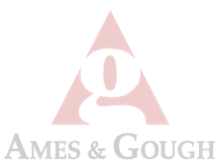Coverage Insight
Underwriting Consideration for D&O Insurance
Directors and officers (D&O) liability insurance is an insurance coverage sought by private and non-profit organizations to help protect their executives from costly legal actions. Over the years, insurance companies have refined their underwriting practices for D&O insurance to reward organizations that implement proactive risk management measures.
While organizations across the United States have developed a greater appreciation for the importance of D&O insurance, many misconceptions about the underwriting process for D&O insurance persist. This Coverage Insights article examines some of the information that underwriters generally review when they receive an application for D&O liability insurance.
The Basics
Applications for D&O insurance generally start by asking applicants for a basic profile of their organization. In particular, underwriters want to establish the organization’s size, location and industry. While this information may seem basic, it impacts an underwriter’s willingness to accept an application for coverage, and sets the price, terms and conditions of the policy.
It should be noted that an organization’s industry may contribute to an insurance company’s perception of the D&O risk posed by an applicant. When forming an opinion of a potential new client, underwriters will often take into consideration any recent litigation trends, along with their own underwriting experience with organizations in that sector.
The Organization’s Financial Condition
Typically, underwriters will require organizations to submit a copy of their audited financial statements along with their application for D&O coverage. Underwriters require this information in order to develop an understanding of an organization’s financial circumstances, particularly its key income statement components and balance sheet components. This information is used to create a range of financial ratios and can be used by an insurance company to benchmark an applicant to other similar organizations within its industry.
One of the main questions the underwriters will be trying to answer is whether an organization has sufficient cash or credit available to fund its operations and service its debt obligations for the proposed policy period.
Organizations with a strong financial standing operating in an industry with positive economic outlook are generally looked upon favorably by underwriters.
Claims History
Insurance companies, by their nature, want to extend coverage to organizations that will allow them to remain profitable. Insurance companies generally view an organization with a history of frequent claims or pending litigation as undesirable, and may decline to offer coverage or charge more for coverage based on the likelihood of a future loss.
While each insurance company has its own internal D&O underwriting practices, underwriters typically look at the following:
- Recent civil or criminal action, or administrative proceedings alleging violation of a federal, state or foreign securities law
- Involvement in insolvency or bankruptcy proceedings
- Instances of employment or labor-related litigation or proceedings
- Disputes over employee benefit or pension plan
Mergers and Acquisitions
If an organization has been involved in merger or acquisition (M&A) activity, underwriters will typically investigate the reasons for these transactions to gain an understanding of its associated risk. Insurance companies are interested in this information because financing activities and M&A activity are events that often lead to D&O claims.
Depending on the nature of an organization’s M&A activity, an underwriter may recommend certain conditions or restrictions in the D&O coverage provided to the organization or choose to decline coverage altogether.
Employment Practices
Current and former employees are a common source of D&O insurance claims, especially for private and non-profit organizations. In order to get a better sense of how likely an organization’s directors and officers are to be pulled into a dispute with employees, insurance companies will typically ask a series of questions related to employment practices. Common questions include, but are not limited to, the following:
- Does your organization have a formal human resources department?
- Does your organization have an employee handbook?
- Has your organization recently completed any layoffs, facility closures or early retirement programs?
- What is your organization’s annual turnover rate?
- Does your organization have policies forbidding discriminatory conduct in the workplace?
- Does your organization have formal hiring and interviewing guidelines?
International Exposures
Organizations that have operations in foreign countries tend to face a higher degree of D&O risk due to the complex compliance requirements that exist in each jurisdiction. Accordingly, underwriters will typically ask an organization applying for D&O coverage what percentage of its business is done in the United States and other countries.
Diversity of Business Activities
Generally, D&O risk is lower for organizations that concentrate their efforts in one core business activity. For this reason, underwriters may look more critically at organizations that are involved in too many unrelated areas where the directors don’t have expertise in that type of operation. As a rule of thumb, the longer an organization has been involved in a business activity, the D&O risk associated with performing that activity decreases.
More Information
Whether your organization is a non-profit or privately held, it is likely that it can benefit from a D&O policy. While the application and underwriting process for D&O insurance may seem daunting, Ames & Gough knowledgeable insurance professionals are here to ensure your organization finds the insurance coverage it needs.
Ames & Gough, as your insurance and risk management advisor, is providing this update to assist you in your risk management efforts. While insurance is a critical component of any risk management and risk financing plan, the most important thing your organization can do is to work to prevent or minimize losses before they occur. If you have any questions or need further information about this topic and related issues, please contact your Ames & Gough client executive.
